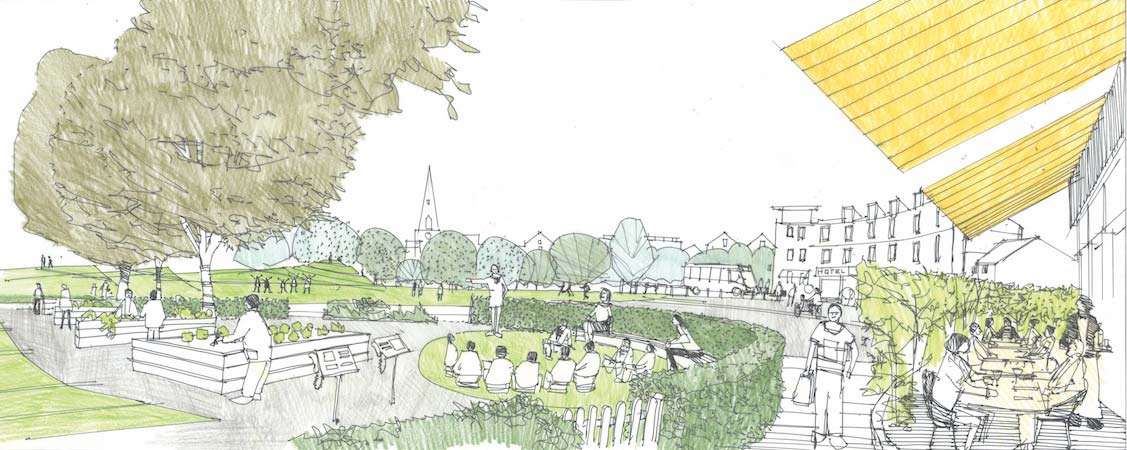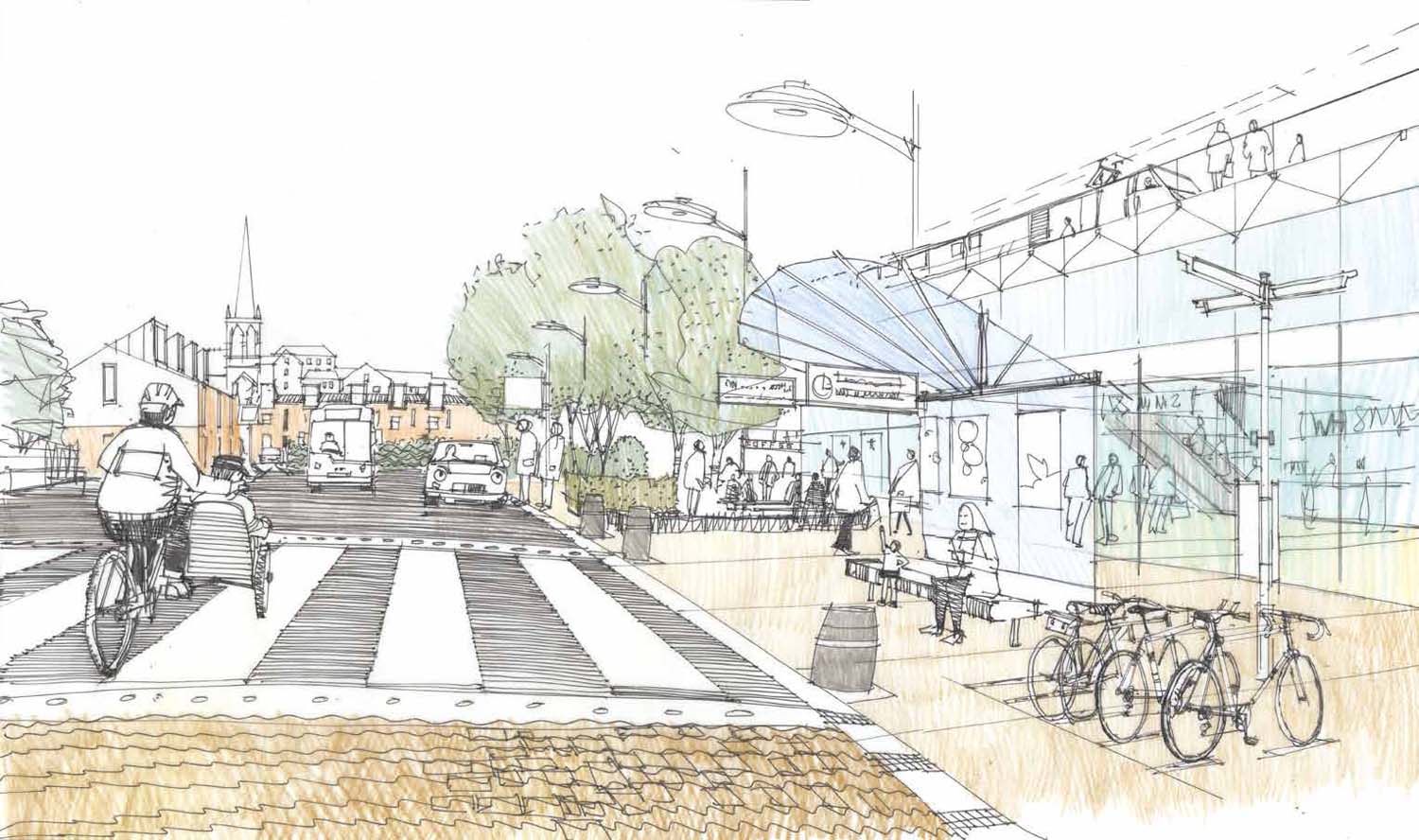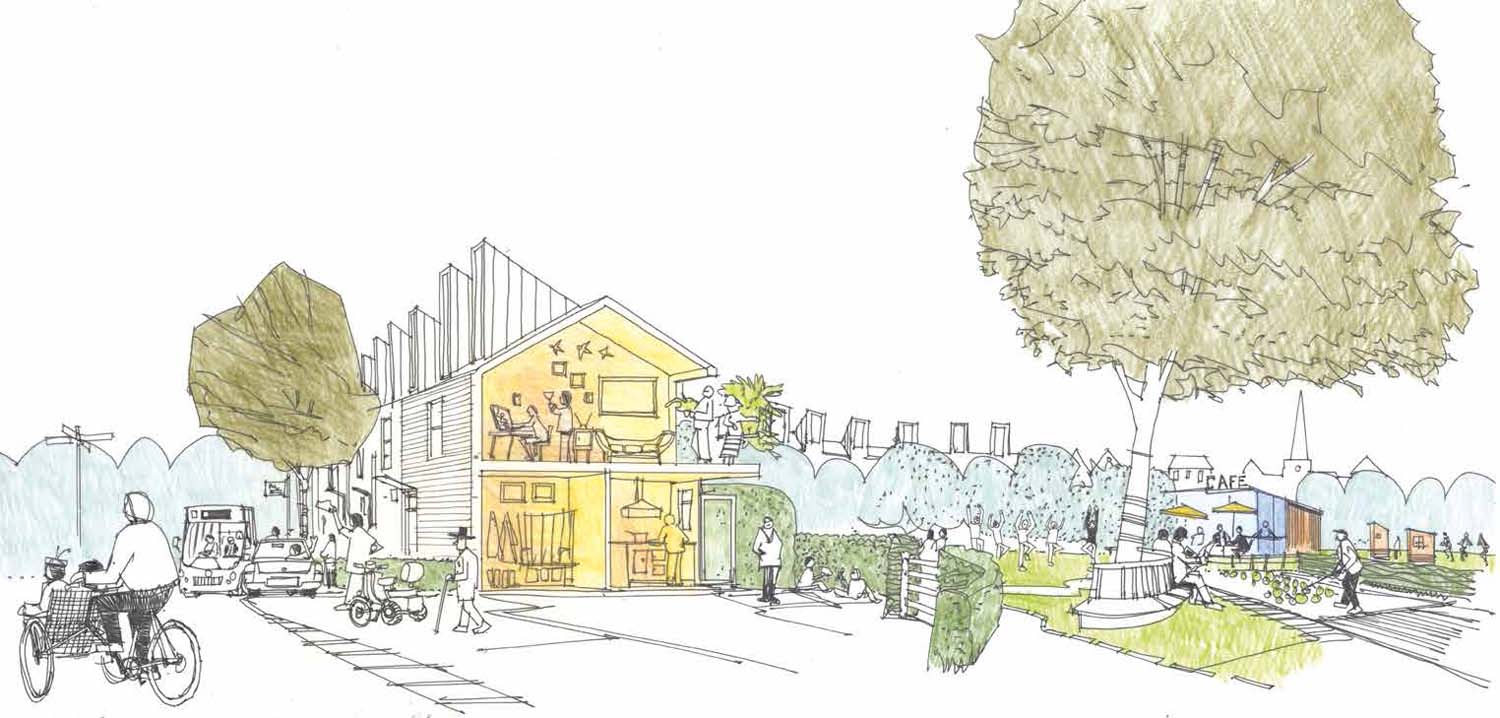Town centre living: ten principles of a caring place
Explore how town centres can be adapted to support us as we get older and what a caring place could look like.

Scotland is changing, and with these changes come both opportunities and challenges. We are all living longer, and although this is undoubtedly positive, it also challenges us to think about how we can live well during that time.
With social isolation and loneliness identified as major public health issues—especially for older people—we need to seriously reflect on how we can adapt and improve our town centres to help combat those challenges.
To help you learn about how town centres can be improved to address the needs of the ageing population, we have put together a report which discusses the ten principles of a caring place. It sets out the work we have been coordinating together with Scotland’s Towns Partnership, to respond and support the Scottish Governments work around town centre living.
The ten principles of a caring place
In 2018, we identified the ten principles of a caring place during a workshop from a Public Sector Client Forum event. These principles place our ageing population’s needs at the heart of the decision-making, service provision and investment in our place.
In this report, we follow the lives of four personas—Richard, Elizabeth, Angie and Helen—allowing us to focus on how the places can meet the needs of specific groups of people at four different scales. These include:
- housing infrastructure
- community infrastructure
- green infrastructure
- transportation and digital infrastructure
Let’s explore how town centres can be adapted to support us as we get older and what a caring place could look like.
What are the ten principles of a caring place?
People have options that are efficient, cost-effective and encourage social interaction. There are connections between other towns and centres. Not every town can offer everything our people need, and inadequate transport between places can be an isolating factor.
Achieved by: Providing green travel options that are safe, reliable, convenient and comfortable. Improving frequency and choice of local transport options that help to connect people and places.
Inclusive networks and spaces that support multigenerational interaction. Diverse places to meet, connect and chat. Barrier-free open space for the whole community, within walking distance of homes and workplaces.
Achieved by: Building, enhancing, and maintaining a network of accessible social spaces, (internal and external) to support intergenerational relationships – supported by communication, events and programming around community need.
Pleasant walkable places supported by technology, services and community.
Achieved by: Extending accessibility options and mobility services. Enabling walking choices through service design and spatial design, supported by innovation in community, partnership and innovative mobility technologies and systems.
Provision of intergenerational housing that offers choice in terms of typology, location and resident connectivity – supported by policy and financing mechanisms (e.g. co-living mortgages).
Achieved by: Regulating and innovating for mixed-tenure neighbourhoods that support community building, changing needs, right-sizing, step down/step up care, social spaces and places for family or friends to stay whilst visiting.
Transform failing spaces and buildings by considering opportunities for re-use and repurposing and developing intelligent systems that optimise the use of latent space and services.
Achieved by: Adaptive and innovative repair and retrofitting of vacant properties. Design support for technology-based wellbeing and care services supported by integrated systems, accessible and easy to use home-based solutions, adaptable infrastructure, and local skills.
For patients, families and care professionals. Encouraging compassion and care for one another and providing community support for technology use to increase confidence and connectivity.
Achieved by: Taking a whole family approach to planning services which supports single households with capability or mixed dependency households. Supported by places to socialise and opportunities to participate – and excellent, well-connected communication using the different channels users engage with, to build better awareness of local opportunities.
Ensuring that a sufficient number of core services (e.g., banks, libraries, shops, healthcare and publicly accessible toilets) are available and accessible.
Achieved by: Reshaping services, life planning and healthcare around local needs supported by sustainable, distributed wellbeing and community hubs. Connected by technology, partnerships, and quality public realm.
Empowering carers with more integrated place-focused services, workforce development and work assignment systems – supported by partnership working with clients, neighbourhoods and communities with smart technologies.
Achieved by: Adopting innovative care models. Using technological systems, solutions and area-specific carer allocation to provide staff with more time for clients and better care.
Integrated, multidisciplinary and empathetic health and social care. Ensuring patients are listened to and empowered in their care journey.
Achieved by: Curating conversations around the shared identity of the community, the values and expectations to enable people to make informed choices about participation, supported by place-based approaches to decision making.
Provide a breadth of opportunities for volunteering, hobbies and skills development to provide fulfilment and a feeling of usefulness – reducing isolation and loneliness for individuals.
Achieved by: Recognising the potential of any individual to be a resource or source of benefit to their wider community and building programmes of opportunity for work and purposeful activity linked to service provision, volunteering, and repurposing spaces on the high street to support enterprise.

What you can expect to do with these ten principles
These principles are not intended to reflect a definitive list or set of solutions. It suggests important issues to consider when thinking about our towns and town centres. These principles are interconnected and not one principle alone can transform a place independently.
Image credit: Richard Carman

What we aim to achieve
Our ambition is to bridge the social, environmental, and technological needs of our changing communities, and the untapped opportunities offered by the places we already live in.
From sustainability and transport to amenities and accessibility, the Place Principle encourages us all to think about all the things our communities need from the very beginning.
Image credit: Richard Carman
Header image credit: Richard Carman
Share your ideas and experiences on caring places
We are interested in your thoughts about ‘A Caring Place’. On this website we have a range of blogs by designers, care professionals and those cared for (through the organisations that represent them) on their thoughts around the ten principles of a caring place. Contact us to share your experiences of a caring place.
